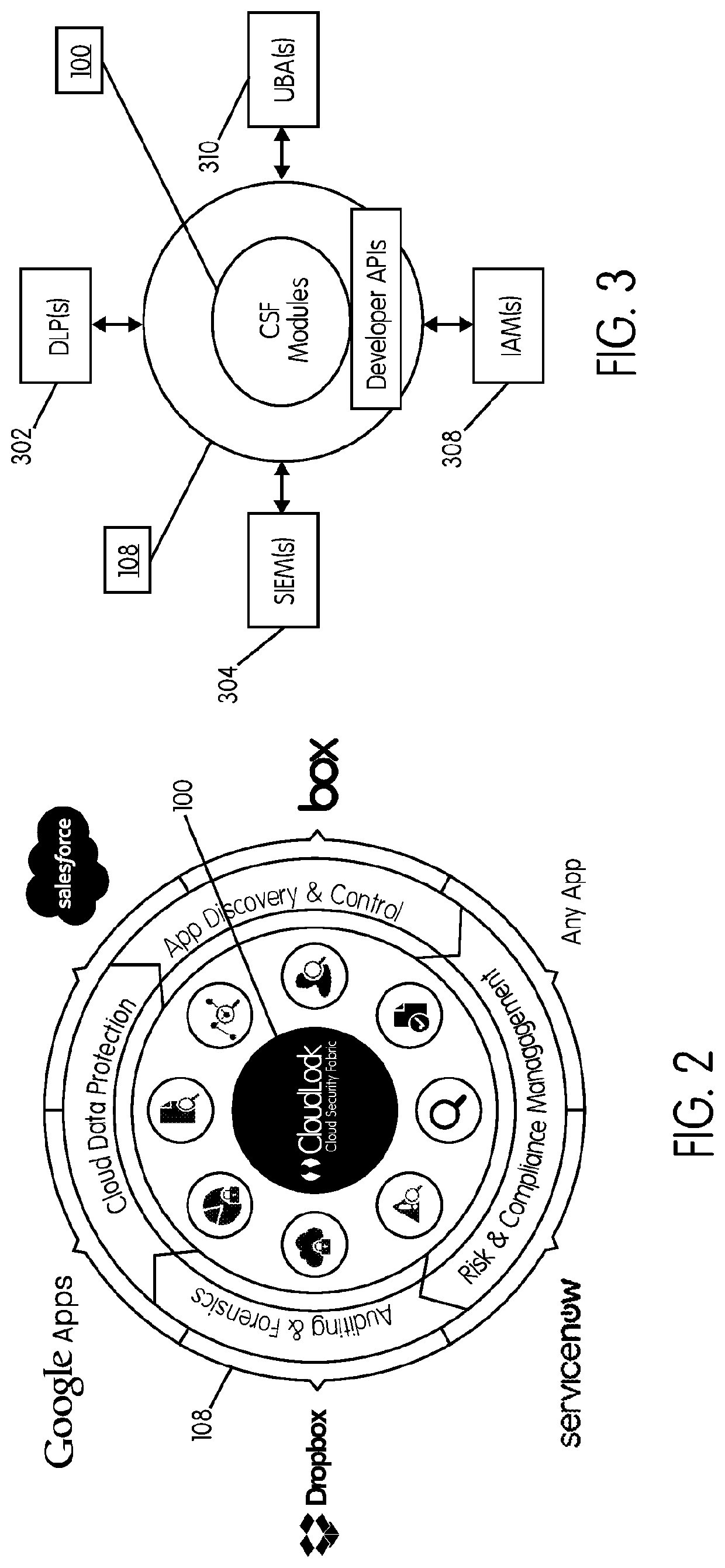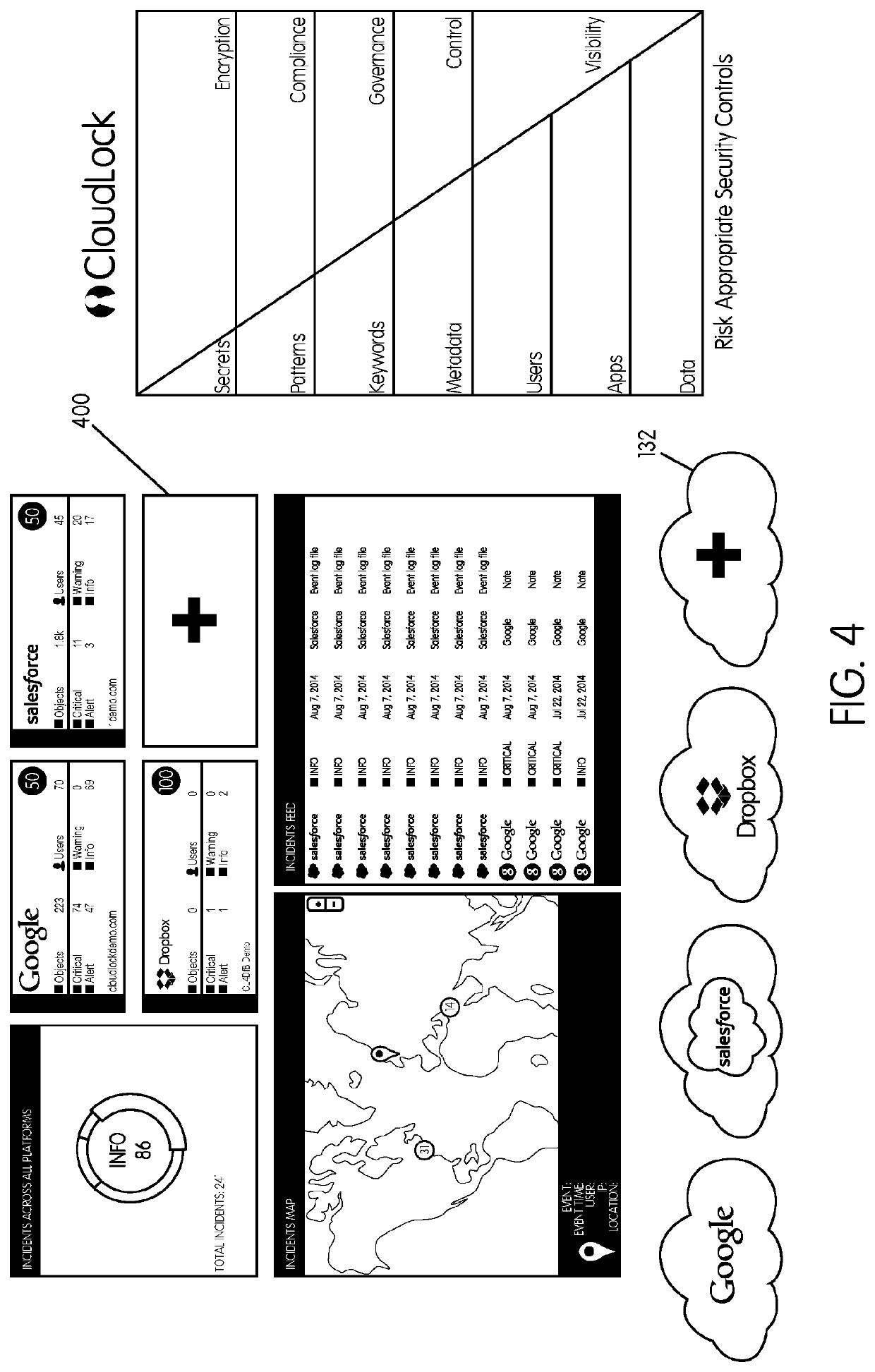System and method for securing an enterprise computing environment
a computing environment and security technology, applied in computing, multi-programming arrangements, instruments, etc., can solve the problems of enterprise firewall, which may protect, and cannot effectively support such saas applications, so as to improve the security of that content, disrupt the native functionality, and ensure the effect of sensitive data
- Summary
- Abstract
- Description
- Claims
- Application Information
AI Technical Summary
Benefits of technology
Problems solved by technology
Method used
Image
Examples
Embodiment Construction
[0097]FIG. 1 illustrates a cloud security fabric (CSF 100) 100, which may be comprised of a collection of cloud-native security services that are accessible through a series of interfaces, such as application programming interfaces (APIs). The CSF 100 may be embodied as an application that includes various modules or components packaged therein. The CSF 100 may include a user interface (UI) that is built on top of, and that accesses, various developer APIs 102 by which a user or operator, such as a security application developer, a developer of another type of application, a security professional, or an information technology (IT) professional may access and use the CSF 100. In embodiments, another set of APIs, referred to as application connection APIs, or connector APIs 108, may connect with and collect information from various different sources, such as resources used by the users of an enterprise, including resources that involve data, applications, services and the like that ar...
PUM
 Login to View More
Login to View More Abstract
Description
Claims
Application Information
 Login to View More
Login to View More - R&D
- Intellectual Property
- Life Sciences
- Materials
- Tech Scout
- Unparalleled Data Quality
- Higher Quality Content
- 60% Fewer Hallucinations
Browse by: Latest US Patents, China's latest patents, Technical Efficacy Thesaurus, Application Domain, Technology Topic, Popular Technical Reports.
© 2025 PatSnap. All rights reserved.Legal|Privacy policy|Modern Slavery Act Transparency Statement|Sitemap|About US| Contact US: help@patsnap.com



